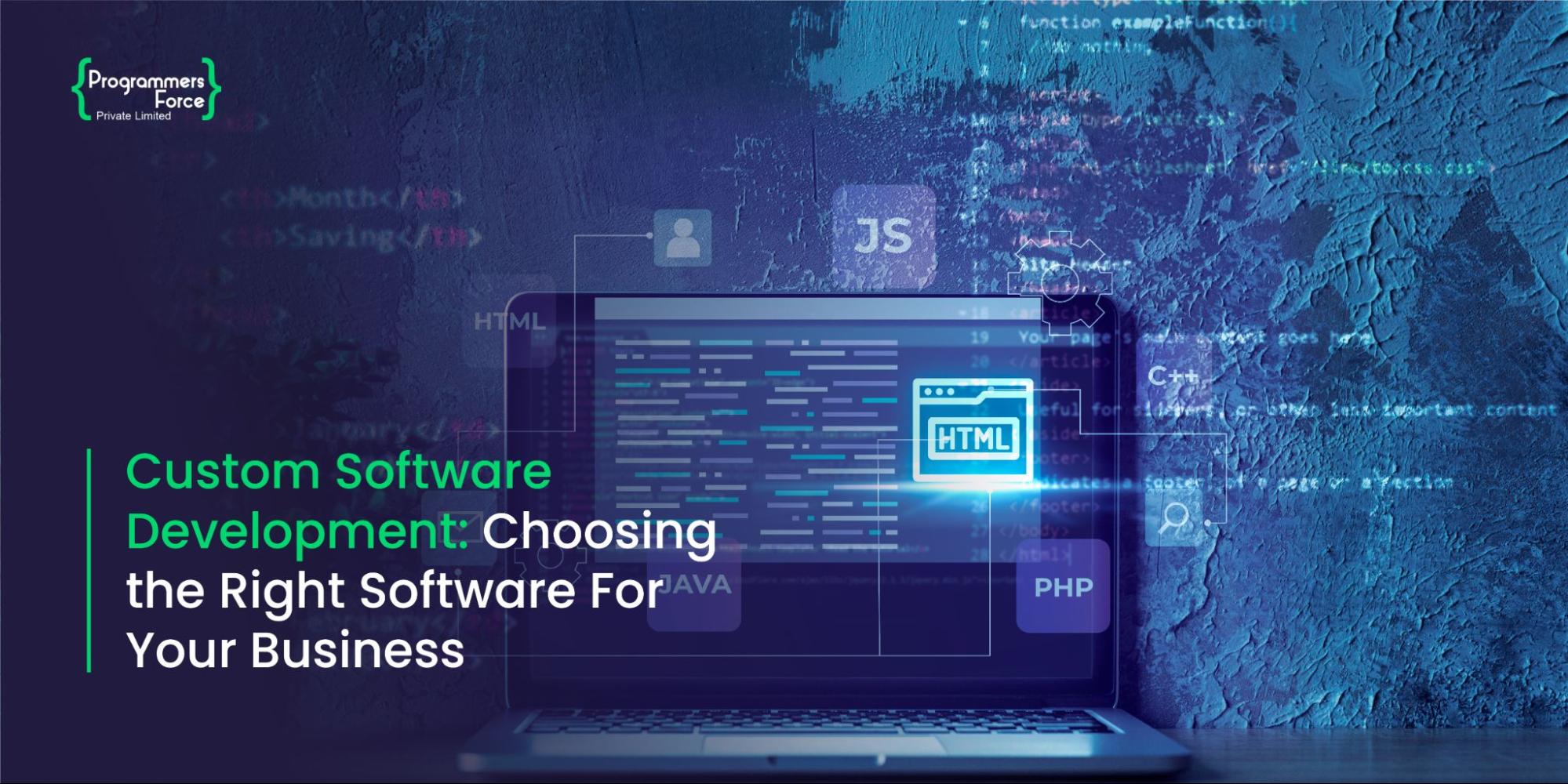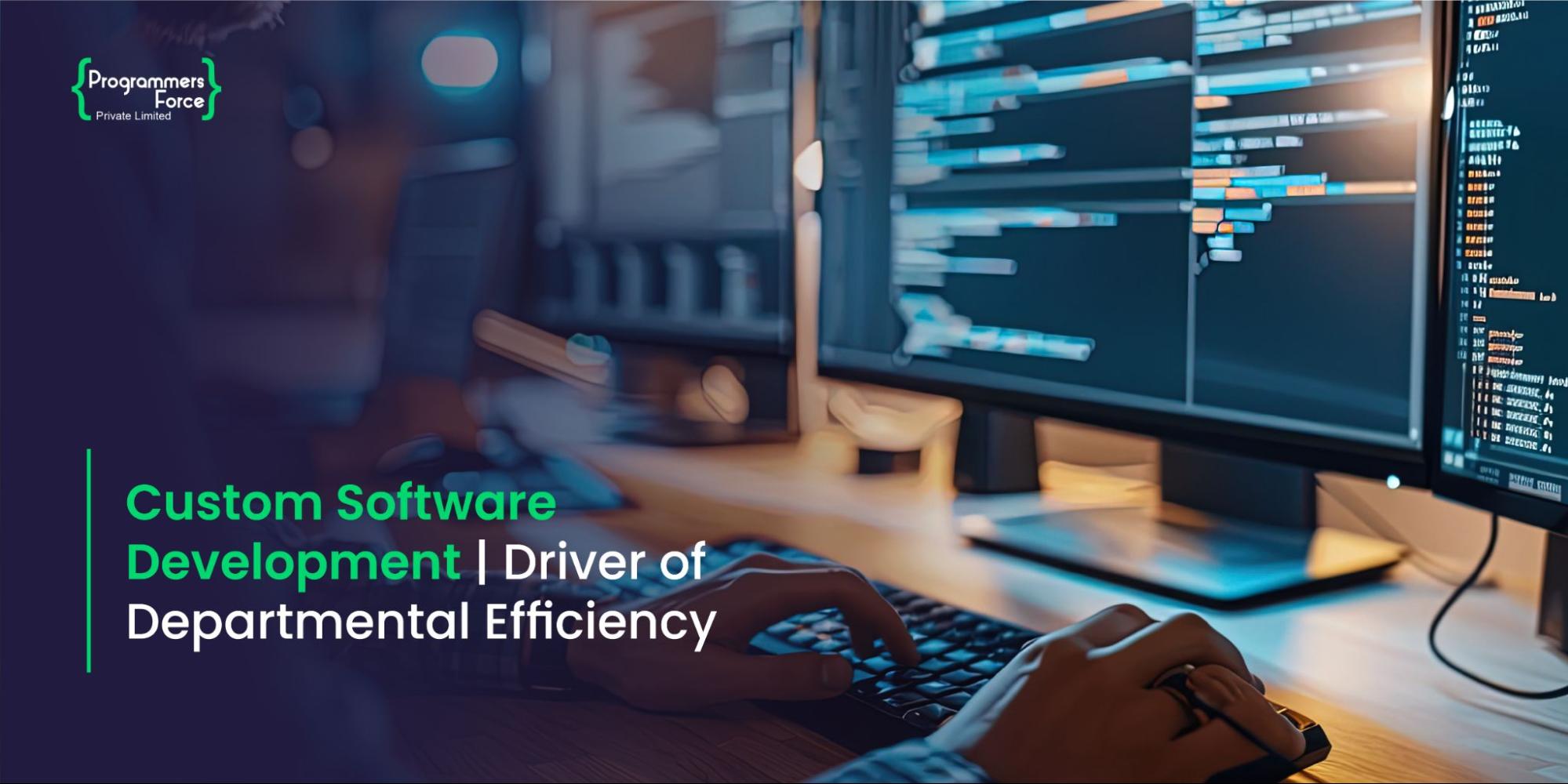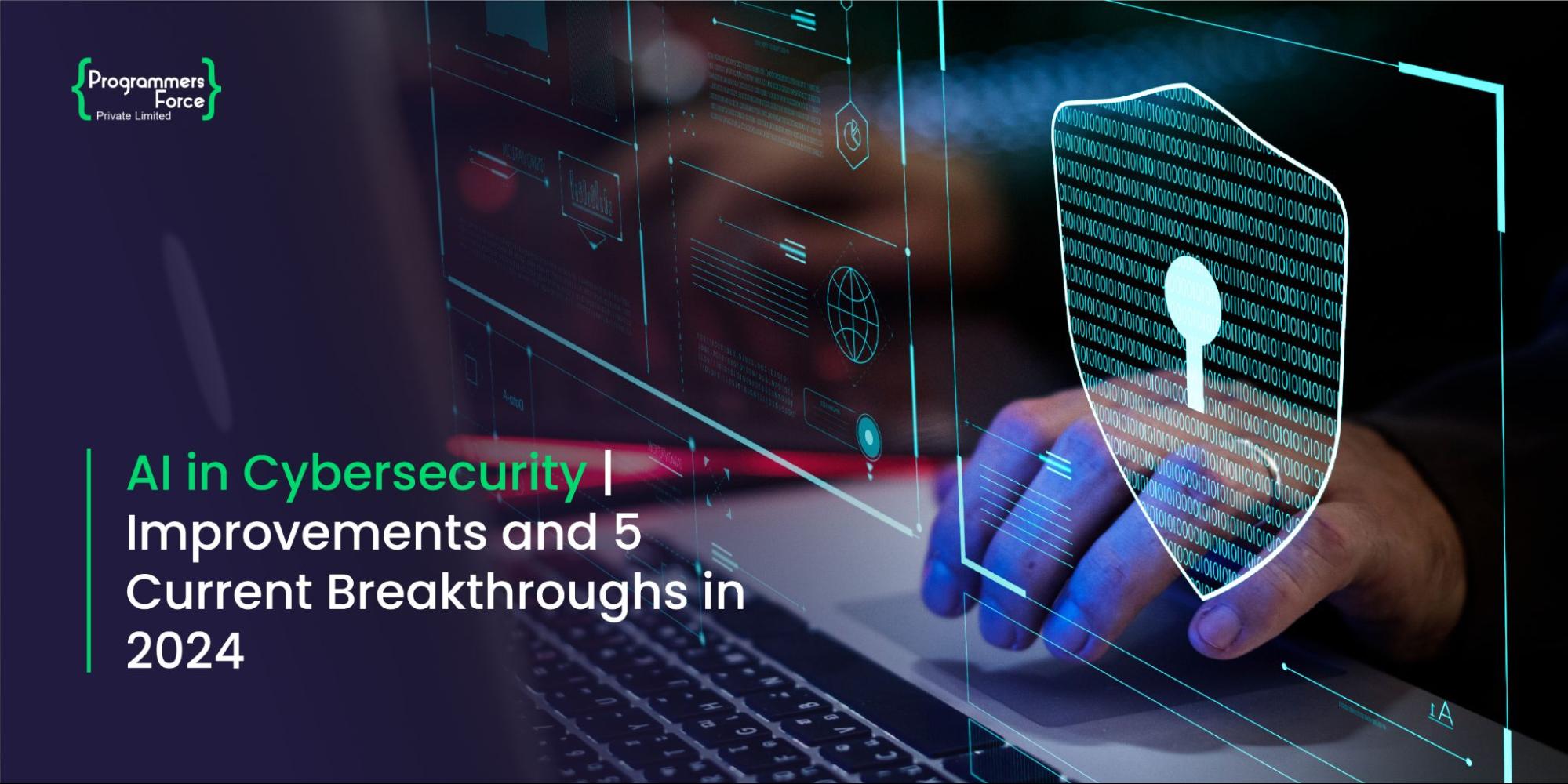
AI in Cybersecurity | Improvements and 5 Current Breakthroughs in 2024
“Hackers can track down 45% of all passwords in less than a minute” – says the Kaspersky | a cybersecurity company
Staying ahead of threats is not a challenge anymore but a necessity, especially when it comes to cybersecurity. The tech world is where digital platforms are as perilous as they are boundless and ultimately require the defense mechanism to change. Sit down for a while and think about a downtown that is not filled with unseen attackers but with invisible threats, i.e., malware, hackers, and tricky cyberattacks.
We often struggle to deal with the clever tricks of modern-day criminals. However, a new defender emerged from the technology perimeters: Artificial intelligence (AI). It is a power bot that analyzes the depth of real-time data and identifies threats while adapting to the ever-changing tactics of the cyber world. Welcome to the future of digital streets, where AI in cybersecurity is not just a tool but a relentless protector in the never-ending battle of online defense.
AI and Cybercrime | How Criminals Exploit Security
With the Internet of Things (IoT) and AI, hacking and exploiting security is already a no-brainer, hence the progression of fraudsters. For example, if someone hacked your account, would you just waste time searching for the offender or file a suit? Regardless of what you do, you will never be able to find your culprit. The ultimate key will be preventing and protecting your account.
On average, 31,000 phishing assaults are reported daily, says the cybersecurity firm SlashNext. The research further elaborated that cybercriminals use generative AI tools like ChatGPT to generate emails that target business emails and other messages. Keep reading to learn more about AI and its role in cybersecurity.
Artificial Intelligence in Cybersecurity – The Enhanced Defense Strategy
“Cyber-security is much more than a matter of IT.” ― Stephane Nappo.
Currently, threat actors are using ChatCPT to develop malware that can easily detect weaknesses in the codes while breaching user access restrictions. Therefore, it is evident that AI is already impacting cybersecurity’s future. Nevertheless, artificial intelligence, ML, and predictive analysis are also incorporated to improve cybersecurity. From detecting irregularities to outlining potential risk patterns, automated structures are responding to security breaches. As a result, 82% of IT executives planned to invest in AI-driven cybersecurity.
Reduce Unwanted Threats with AI Trained Data
“The world is one big data problem” – Andrew McAfee
One of the main impacts of AI in the digital landscape is its influence on data training. Let’s dig deeper into this and explore what role AI plays in this category.
Previously, the data used to train AI and ML algorithms lacked the representation of the threat spectrum. This ultimately led to errors and misidentification of commands. However, when enhanced technologies and automated tools were used in data training to improve security, it helped assess the potential risk while addressing the most critical threat to data.
For instance, imagine an AI developer detects a hacker from Russia as a threat to some US company. As a result, the trained information integrated into the automated model will catch the potential risk alerts while responding to the threats in a systematic way without missing any anomalies, providing the desired outcome.
The Changing World of AI Cybersecurity Solutions | Major Improvements
In the face of potential attacks dominated by AI, the tool also serves as a powerful defense mechanism that can analyze massive data with rapid risk and vulnerability identification and prevent attacks. Let’s take a look to some of the real-time changes AI has brought to the cybersecurity world.
- Generates recognizing warning signs prior to attack occurrence
- Optimizes understanding ability of cybersecurity threats
- Refines the access controls and password protocols
- Mitigates and prioritizes risk
- Automates detection and instant threat responses
- Elevates productivity and effectiveness
From offenses to defenses, AI cybersecurity solutions are transforming the ways corporations are protecting their businesses and digital assets. These solutions enable security ecosystems to implement defense strategies to protect assets and sensitive data.
How AI-Based Cybersecurity Works?
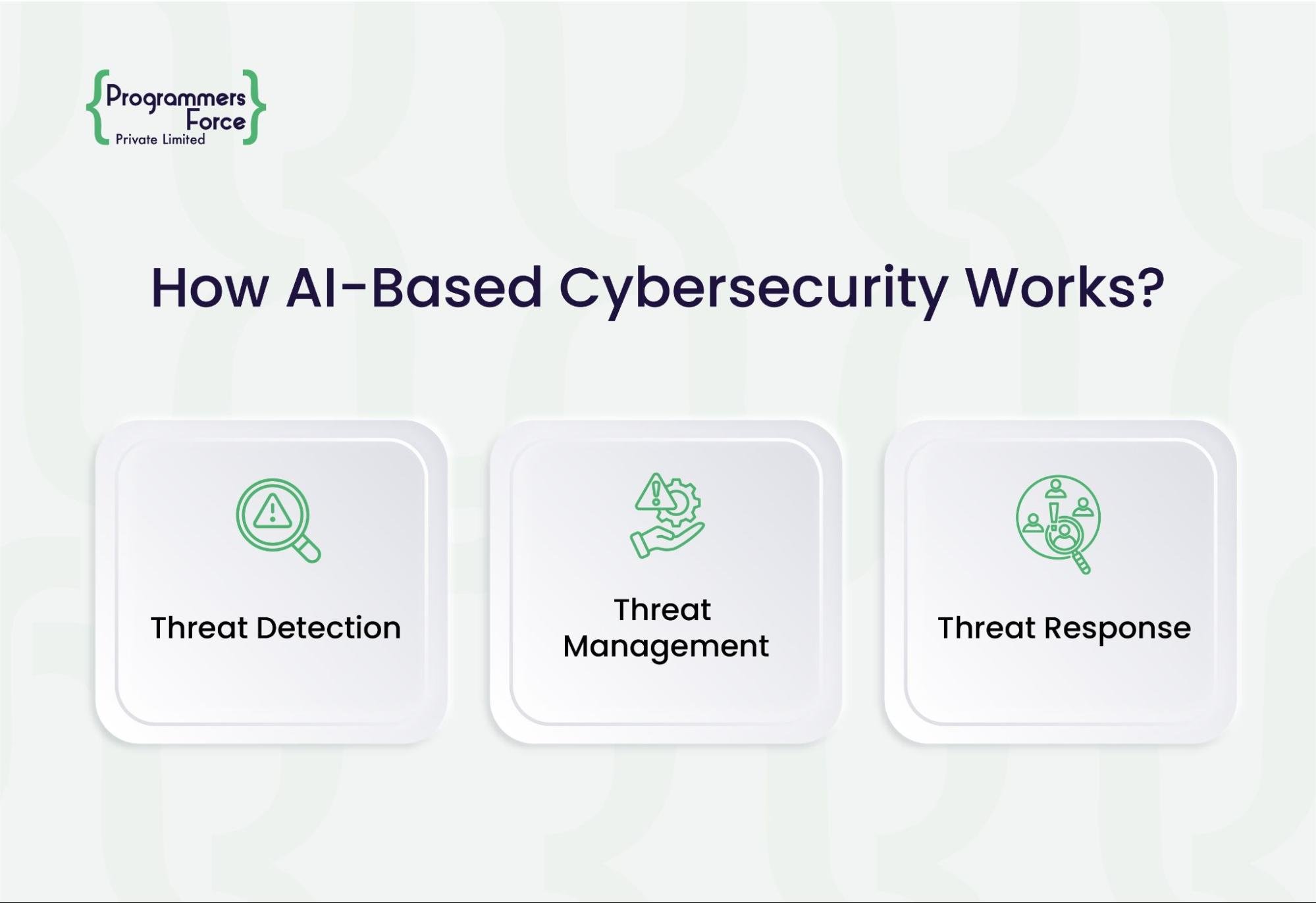
Organizations are already utilizing AI to assist businesses in dealing with cybersecurity threats, making it manageable and more effective. In this case, let’s discover the workflow of AI-based cybersecurity solutions addressed below:
Threat Detection
AI-trained models easily collect and analyze data from thousands of controlling points involving cloud APIs, user behaviors, system logs, and network flows. They offer great visibility in networking and endpoint devices by recognizing patterns and anomalies at a more accurate level.
Threat Management
Imagine receiving multiple cloud security alerts daily, and the observed rate tells that half of the warnings are false positives while the rest are on low priority. The main challenge occurs when organziations have to prioritize which alert should be dealt with first. Therefore, AI modules provide effective strategies to detect, prevent, and respond to cyber risk based on their priority level.
Threat Response
Artificial intelligence has been effectively used to automate actions that speed up response timing. For example, if an unknown malware sample is detected on the end user’s device, the automated systems will instantly shut down the devices to respond to the threat. This will prevent the infection from spreading into the rest of the company’s system. The AI-driven automated capabilities not only generate alerts but also take quick actions.
The 5 New Trends in AI Cybersecurity Solutions
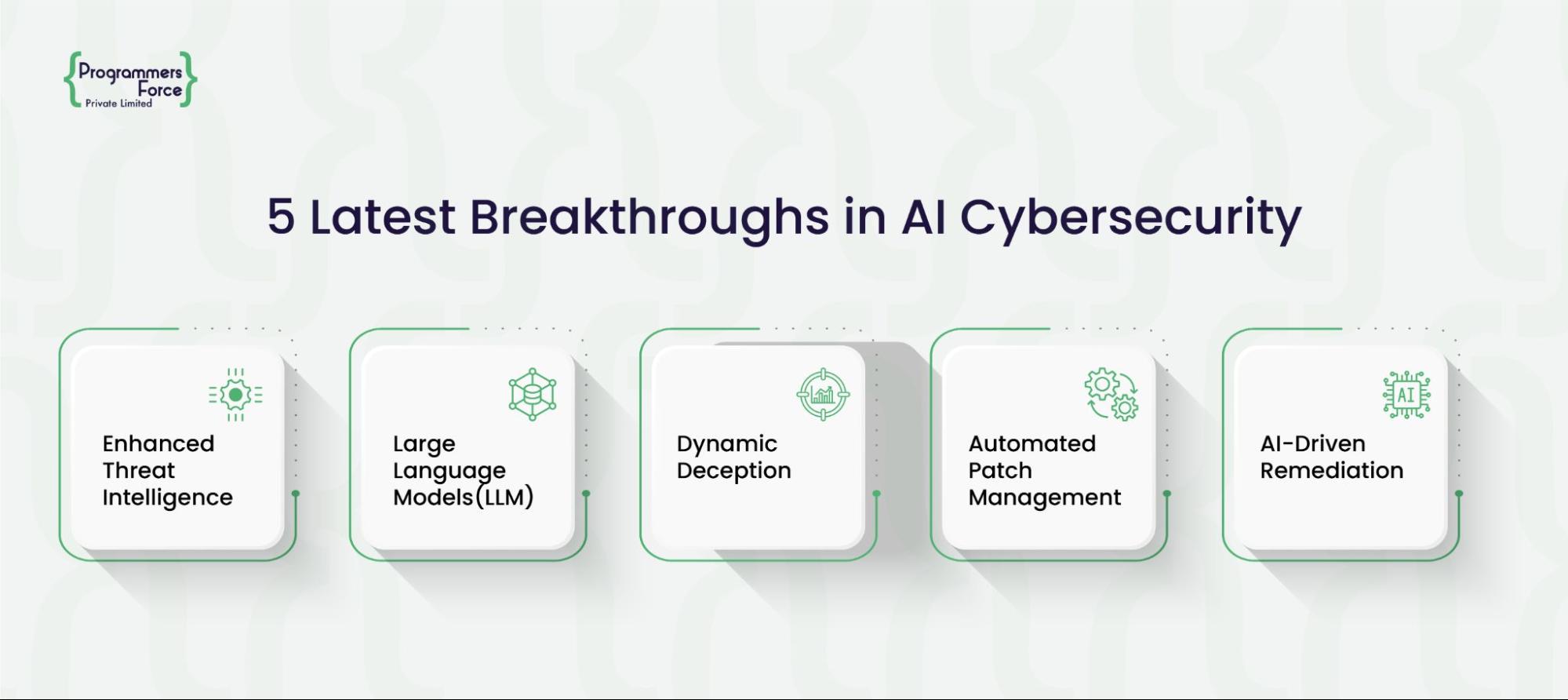
With the fast-moving AI world, the rough idea is to make every tool model efficient and effective so that humans can focus more on business goals and growth rather than security concerns. Therefore, numerous cybersecurity companies have already launched AI-based cybersecurity solutions.
1. Enhanced Threat Intelligence
AI has transformed analytical work; rather than relying on intricate languages, operations, and other engineering tactics, models can now analyze huge amounts of data. This results in understanding threat rates generated by AI threat intelligence algorithms with improved response rates.
2. LLMs
In a recent breakthrough, a company named Kaspersky revealed that 45% of passwords can easily be cracked down within seconds. Scary, isn’t it? However, the updated AI algorithms can potentially enhance password security with Large Language Models(LLM). These modules are trained on extensive password breaches that have the potential to enhance the passcode generation complexities.
3. Dynamic Deceptions
Malicious agents are on a mission to use AI to fuel deception techniques like deepfakes, impersonation attacks, and malware attempts. On the other hand, the same technology is employed to overcome deception approaches, defending the organization against sophisticated threats.
4. Automated Patch Management
AI-based patch management is the system that assists organizations in identifying and prioritizing vulnerabilities while eliminating manual interference. Furthermore, it enables the security teams to minimize the threat rate without increasing workloads for the employees.
5. AI-Driven Remediation
With the latest progression of AI, the new modules are capable of remediating the threats faster and more efficiently. Modern AI-driven solutions can process and generate high alerts quickly thus providing clear and customized guidance in order to fix complexities. Moreover, it enhances the overall security ecosystem.
Seize the Opportunity with Programmer Force – A Drive Towards More Secured Cybersecurity Solutions
Programmer Force is on a mission to elevate the cybersecurity landscape to make the digital world a safer business place. Intending to create more secure and effective strategies, our team has been dealing with all the unique challenges and market complexities. Not only are we working for the business, but also calling out on all the fresh graduates to join hands with us and shape their futures in this domain. One of the candidates has something to say about us.
I began my journey with PF in June 2021 as part of the Information Security Training Program. Upon completing the training, PF offered me a permanent job opportunity. When I initially started, I worked across various domains within the Information Security department, handling tasks such as server management, penetration testing, monitoring network security, and ensuring policy implementation, etc. – Fahad Younas.
Frequently Asked Questions
Why is AI the Future of Cybersecurity?
AI is way faster than humans at analyzing, inspecting, and monitoring cyber threats. It has the ability to search from massive data sets to detect the patterns that indicate risk in cyberspace. Therefore, implementing AI and ML algorithms in digital security will control the evolving threats in real time.
Is Cybersecurity a Good to Pursue?
Yes, cybersecurity is a promising and lucrative career because of its increasing need in the digital world. As long as digital assets exist, cybersecurity analysts will always be in demand. In future cases, this domain will easily stand among the highest-paid careers in the tech world.









